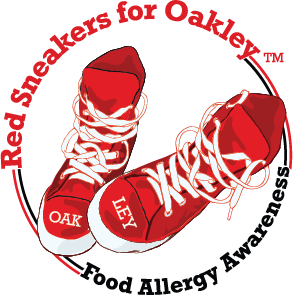How Do You Know When to Administer Epinephrine?
EPINEPHRINE is the *only* first-line treatment for anaphylaxis (a severe, potentially life-threatening allergic reaction). Not antihistamines (Benadryl) or glucocorticoids. Anaphylaxis can be very scary, but how do you know if you are experiencing anaphylaxis? How do you know when you should use an epinephrine auto-injector?
Allergic reactions are categorized as mild or severe. Here are the guidelines for any combination of symptoms:
For ANY SEVERE SYMPTOM, administer epinephrine IMMEDIATELY and call 911
For mild symptoms from A SINGLE SYSTEM AREA, administer Antihistamines (Benadryl) and watch closely in case symptoms worsen
For mild symptoms from MORE THAN ONE SYSTEM AREA, administer epinephrine IMMEDIATELY and call 911. Example: hives along with vomiting, or hives with trouble breathing.
Mild Symptoms:
Itchy or runny nose, sneezing
Itchy mouth
A few hives, mildly itchy skin
Mild nausea or discomfort
Severe Symptoms:
Shortness of breath, wheezing, cough
Pale or bluish skin, faintness, weak pulse, dizziness
Tight or hoarse throat, trouble breathing or swallowing
Significant swelling of tongue or lips
Many hives over body, widespread redness
Repetitive vomiting, severe diarrhea
Confusion, anxiety, impending sense of doom
If you suspect anaphylaxis… EPI FIRST, EPI FAST!
People may wonder if they should administer epinephrine if they suspect — but aren’t sure — that they are having an anaphylactic reaction. The answer is yes. Epinephrine should be administered without delay if there is any concern or suspicion of anaphylaxis, because the risk of an untreated severe allergic reaction outweighs the risk of inappropriately receiving epinephrine.
Decades ago, Benadryl was the recommended treatment for anaphylaxis. But we now know that it only treats a few of the minor symptoms associated with anaphylaxis and it takes 30+ minutes to take effect. Far too long. Often times, Benadryl is used first, thinking it's a more gentle approach. But ANYBODY with a food allergy can have a serious, life-threatening reaction, even if previous reactions have been mild. Benadryl can even mask symptoms rather than treat the symptoms.
Many people have told us that they're afraid to use their epinephrine auto-injector (or their child is afraid of it). But others who have used it during an anaphylactic reaction describe a feeling of "instant relief." We've heard anaphylaxis explained in so many different ways (in terms of how the body feels). Someone recently described it as the feeling of being held underwater, and the epinephrine injection is the feeling when you're brought to the surface and take a big breath of air. Remember that epinephrine is the medicine form of adrenalin, which naturally occurs in the human body.
Furthermore, delays in epinephrine administration can result in more severe reactions, and possibly even death. There is no substitute for epinephrine which (again) is the ONLY first-line treatment for anaphylaxis. Neither antihistamines nor glucocorticoids work as quickly as epinephrine, and neither can effectively treat the severe symptoms associated with anaphylaxis. www.health.harvard.edu
How do you know when to administer a second dose of epinephrine?
There are a few reasons why you may need to administer a second dose of epinephrine. #AlwaysCarry2
1️⃣ A second allergic reaction: You should give a second dose of epinephrine if the person having the reaction is not showing signs of improvement or is even getting worse after 5-15 minutes. As many as 10% to 20% of people administered epinephrine will need more than 1 dose. (The National Institute of Allergy and Infectious Diseases)
Biphasic anaphylaxis strikes after you’ve survived the initial reaction, and all seems well. Biphasic anaphylaxis can occur anywhere from 1 hour to 72 hours after the initial attack. It commonly happens within 10 hours. The symptoms of biphasic anaphylaxis are the same as anaphylaxis, but they may differ in severity. Though symptoms of this second phase are typically mild or moderate, there's no guarantee that the second event won’t become a life-threatening one. That is why EVERY episode requires immediate medical attention. The true incidence of biphasic anaphylaxis is unknown, but it may occur in up to 20% of these cases. (https://www.healthline.com/health/allergies/biphasic-anaphylaxis)
2️⃣ A failed auto-injector: Auto-injectors sometimes fail to deliver the full dose of epinephrine due to manufacturing defects. If the first auto-injector fails, use the second one.
3️⃣ Delayed administration: There may have been a delay in administering, requiring an additional dose of epinephrine. There is clear evidence that failing to administer adrenaline as soon as anaphylaxis is suspected has contributed to fatal outcomes. Delayed injection of adrenaline can also increase the likelihood of a biphasic reaction.
